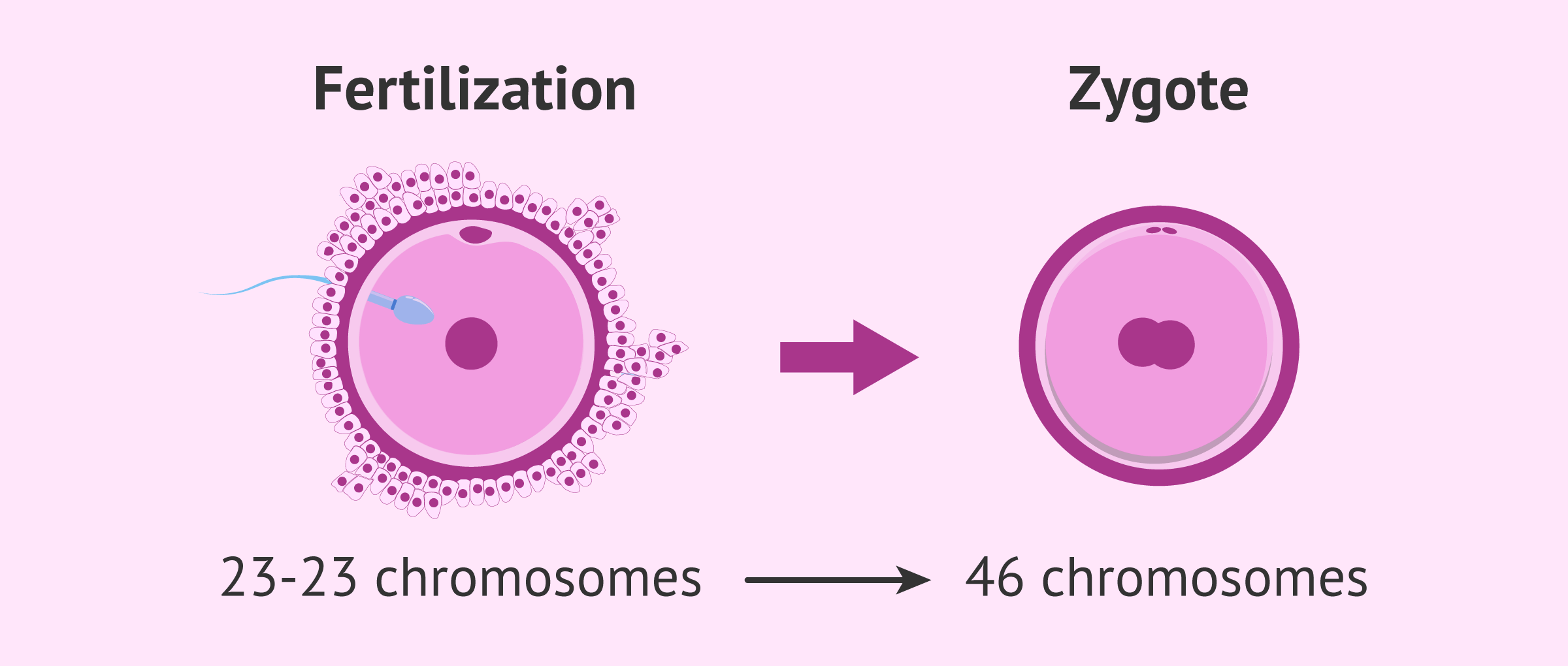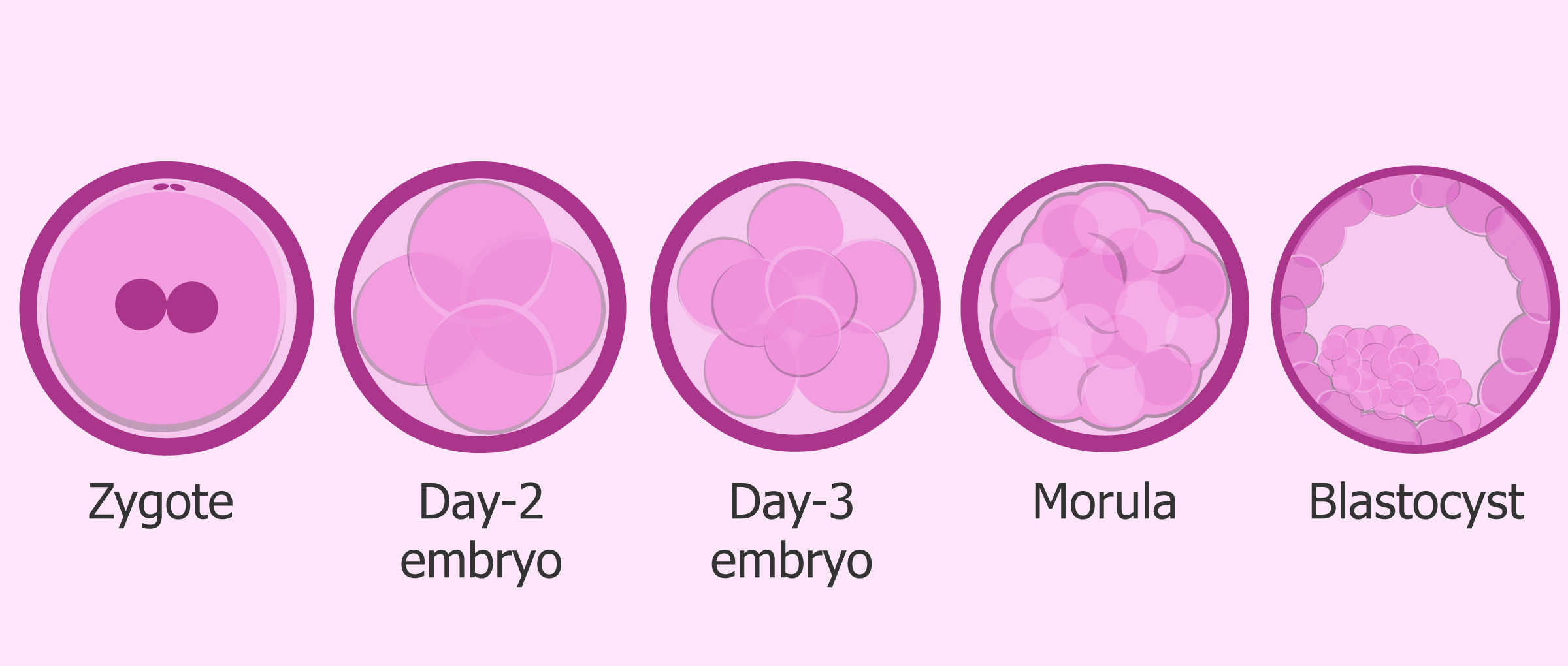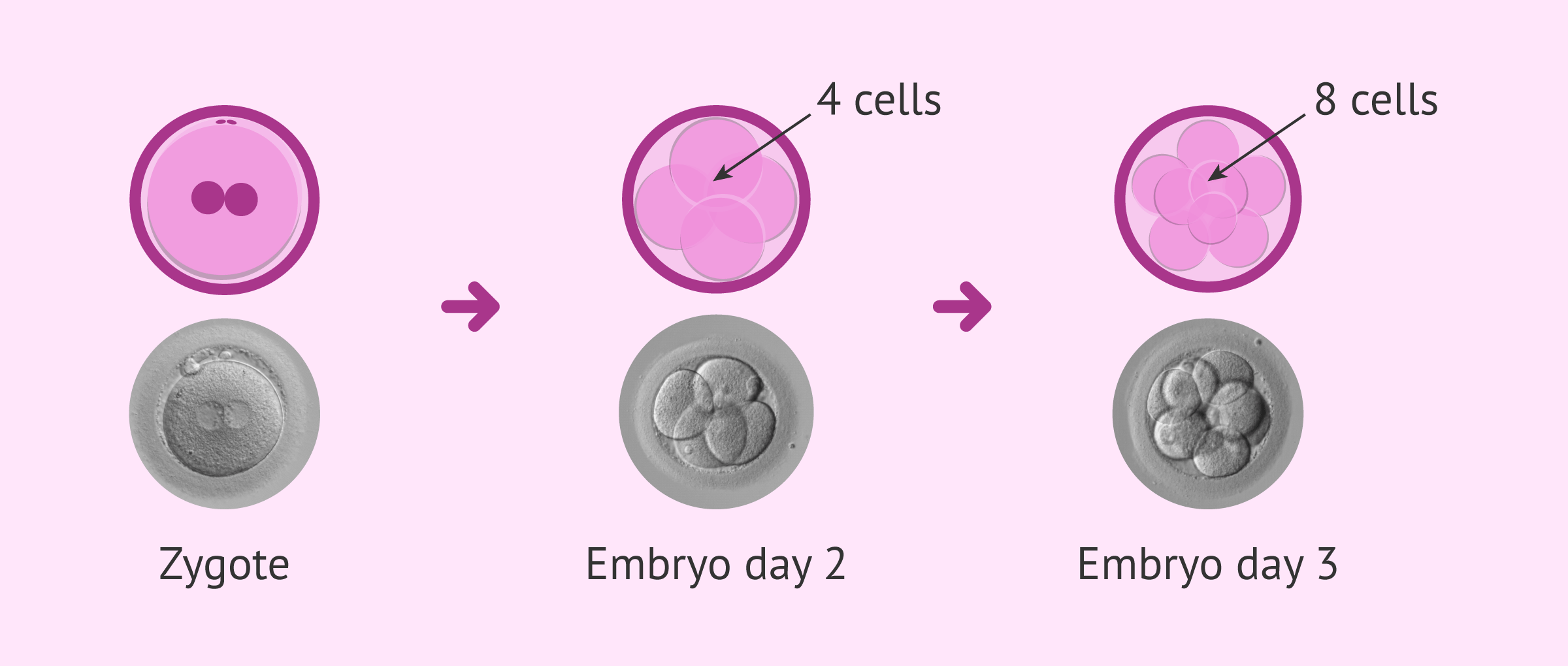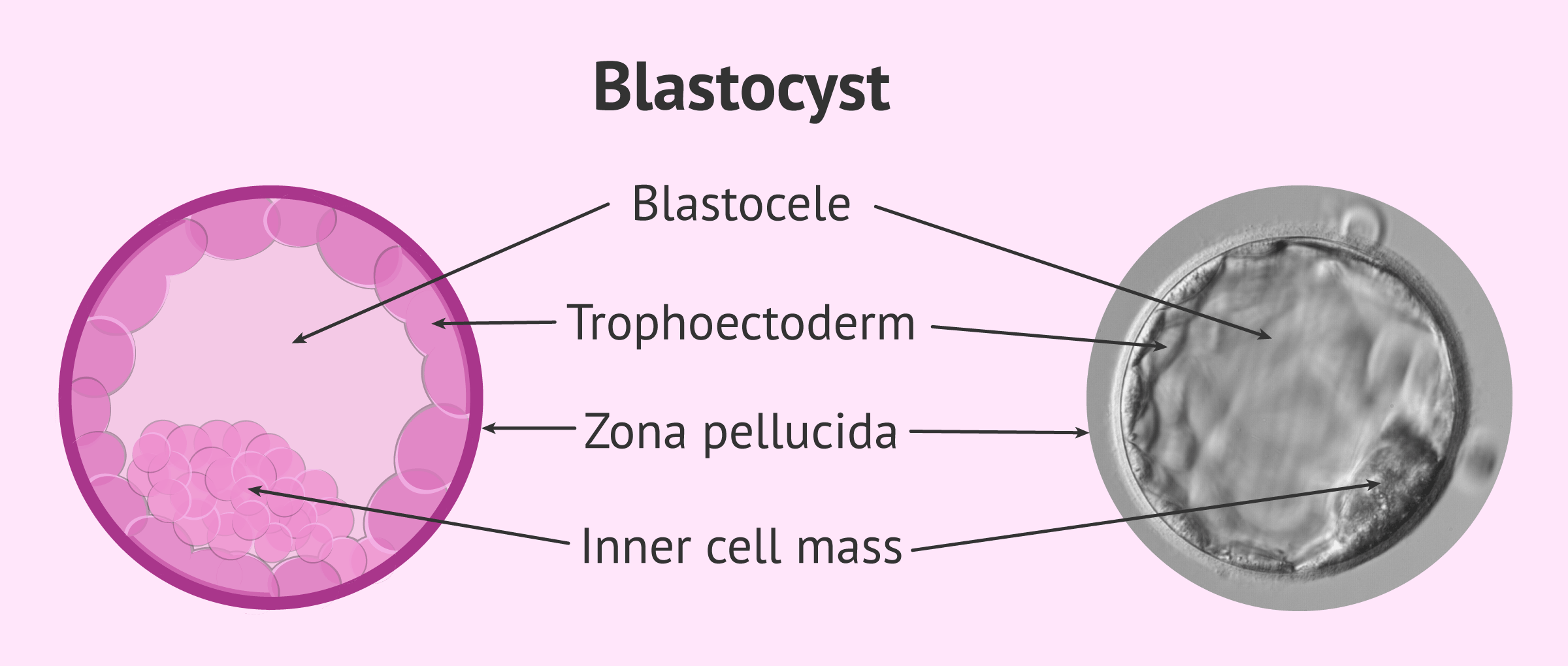Within the world of Reproductive Biology, we can find many terms and concepts that people without specific health knowledge may confuse. This is the case of the words zygote, embryo and fetus, which definition and main differences will be explained hereunder.
It should be noted that these terms are used during the early stages of human development, known as Carnegie stages, which are based on the external and internal features of the embryo. The human embryonic period comprises 23 Carnegie stages that cover the first 8 weeks after fertilization.
Provided below is an index with the 7 points we are going to expand on in this article.
- 1.
- 2.
- 2.1.
- 2.2.
- 2.3.
- 3.
- 4.
- 4.1.
- 4.2.
- 4.3.
- 4.4.
- 4.5.
- 4.6.
- 4.7.
- 5.
- 6.
- 7.
Zygote formation
The zygote is the first stage of life and appears after the union of the egg and the sperm, that is, after fertilization. It consists of only one cell, the first cell of the future baby, and its size is equal to that of the egg.
Fertilization refers to the fusion of the male and female gametes, both with half as much genetic material as the rest of the cells of an organism (46 chromosomes) due to the chromosomal reduction they have undergone during meiosis.
The result of this fusion is the reestablishment of the normal genetic endowment of the human being, a new cell with a nucleus and 46 chromosomes, 23 of maternal and 23 of paternal origin, which is called a zygote.
The zygote appears on day 1 of embryonic development in the fallopian tube of the female, which is where fertilization takes place. From here, it begins its journey to the uterus, where it will implant so that pregnancy can occur.
The zygote, which is a single cell, begins its cell division the day after fertilization. At this point, it is no longer called a zygote and becomes a day 2 embryo with about four cells.
Embryo Development
The embryo stage spans from day 1 of embryonic development, which is still referred to as the zygote, to the eighth week of gestation. During this period of time, the embryo increases in size, multiplies its cells and undergoes strong cellular changes.
The number of cells and the rate of embryonic division is called morphokinetics. Although each embryo is unique and can divide more or less rapidly, there are certain patterns of division that mark whether an embryo is of good quality.
On the other hand, during the early stages of development, the embryo may acquire other names depending on its appearance, such as morula or blastocyst.
Day 2 and day 3 embryo
After the first mitotic division of the zygote, an embryo is obtained with 2 cells and, in this way, it divides successively:
- Day 2 of development
- the embryo usually has about four cells that should be symmetrical, i.e. of similar size.
- Day 3 of development
- the embryo is of excellent quality if it has eight symmetrical cells with a nucleus inside each one.
All of these early stages of embryonic development take place in the fallopian tube as the embryo moves towards the uterus.
Morula
On day 4 of embryonic development, it is possible to find the embryo in the morula stage. This name is due to the fact that it takes on the appearance of a blackberry.
The embryo already has a large number of cells and they can hardly be counted. This is an intermediate moment between the formation of the zygote after fertilization and the development of the blastocyst.
This morula stage usually lasts only one day.
Blastocyst
When the embryo is 5 to 6 days old, it acquires a certain shape and begins cell differentiation. At this point, the embryo is called a blastocyst.
Two cell types are found in the blastocyst, which are grouped into two formations:
- Trophoblast or trophoectoderm
- its cells will be responsible for the formation of the placenta.
- Internal cellular mass (ICM)
- its cells will give rise to the fetus and all the body parts of the future baby.
Inside the blastocyst there is also an internal cavity called blastocele which is filled with fluid. Between days 7 and 8 of development, the blastocyst finally reaches the uterus and embryo implantation takes place. This is the nesting of the blastocyst in the woman's uterus, specifically in the inner layer called the endometrium.
The blastocyst emerges from the membrane that protects it (zona pellucida) and begins to adhere to the endometrium. Implantation ends approximately on day 14 after fertilization, so that the endometrium is invaded by the embryo.
After embryo implantation, the embryo begins to produce the beta-hCG hormone and it is possible to confirm that the woman is pregnant.
From this moment on, the embryo grows at a dizzying pace and goes from having a rounded and unrecognizable shape to acquiring a more elongated shape. The implanted embryo has a baby-like silhouette, although without any details.
It should be noted that implantation is a critical period, since there are many embryos that do not make it, causing implantation failure.
From embryo to fetus
When gestation reaches week 8, the embryonic period ends and the fetal stage begins.
During the first month of fetal life, the body proportion is different and the head occupies a much larger volume.
As the months of gestation progress, the rest of the body acquires a greater proportion until it forms its definitive silhouette.
In the fetus there is a more specific level of cellular specialization. Different cellular tissues are formed and all the organs that begin to function, such as the brain, liver or kidneys, are created.
The fetal stage is the longest period of the future baby. The name fetus is used only during pregnancy, until the time of birth between the 8th and 40th week of pregnancy. After delivery, the fetus is already called a baby.
FAQs from users
What is the difference between an embryo and a foetus?
Knowing the difference between these two terms is very simple: their gestational age.
Embryo and foetus are the product of conception between egg and sperm. An embryo is considered to be an embryo when the gestational age is less than 8 weeks, taking into account from the last missed menstrual period. Once beyond 8 weeks and until birth, it is called a foetus.
Is a zygote a fertilized egg?
An egg is the female reproductive cell, which is fertilized by the male reproductive cell, that is, the sperm. Gametes are haploid cells (23 chromosomes), that is, they have half the number of chromosomes than other cells, which are diploid (46 chromosomes). The fusion between both reproductive cells (male and female) gives raise to a zygote (diploid cell, 46 chromosomes), in which we can find a female pronucleus (23 chromosomes) and a male pronucleus (23 chromosomes).
Zygote or embryo, which comes first?
As explained above, the zygote is the first stage of human development right after fertilization occurs. It is the result of the fusion between gametes: the haploid ovum cell from the female and the haploid sperm cell from the male. The resulting diploid cell is what we know as zygote.
What does a human fetus look like?
The development of a human fetus changes by weeks or even by days. It is not possible to provide a detailed description of the appearance of a human fetus, because it changes as the different parts of the organism develop.
At 4 weeks, it begins to develop the structures that will form its face and neck, but it does not look like a baby yet. At 8 weeks, it is more or less half an inch in size and, by week 12, it measures about 2 inches and the sex organs start to become clear.
For more details, see also: The stages of pregnancy.
What is the difference between 'zygote' and 'gamete'?
Gametes are reproductive cells that unite at fertilization and create a new being: the zygote. The female gamete is what we know as egg cell, ovum or oocyte; the male gamete is the sperm or spermatozoon.
Gametes are haploid cells, while the zygote is a diploid cell: while the former has just one complete set of chromosomes, the latter contains two complete sets. Another difference is that diploid cells reproduce by mitosis, while haploids do so by meiosis.
What is the pronunciation of zygote?
The right pronunciation of this medical term is /ˈzaɪgəʊt/ or /zīˈgōtˌ/. The term comes from the root Greek word zygōtos, which means to yoke or to join. Some synonyms are zygospore or zygocyte.
Do all human fetuses begin as female?
No, that is not true. The sex of humans is determined from fertilization, that is, as soon as it becomes a zygote: if it is XX, it will be a female, while, if it is XY, a male. However, at the beginning, human embryos have the precursors of both female and male gonads.
Taking this into account, if there is no Y chromosome, the embryo will proceed with the development of Müllerian ducts (which give rise to the ovaries). Also, when there is no Y chromosome, the embryo lacks the SRY region: the sex determining region.
To sum up: it is true that one could say that, in mammals, the initial plan for all embryos is female, which is only altered if the SRY region is present.
Suggested for you
We have discussed embryo quality throughout this article. If you want to know in detail all the parameters that are taken into account to evaluate the embryos, we recommend you to continue reading in the following post: Embryo quality and classification.
If you want to find all the details of the embryo and fetus in each month of pregnancy, as well as the changes in the mother, we recommend you to enter the following article for more information: Pregnancy month by month.
We make a great effort to provide you with the highest quality information.
🙏 Please share this article if you liked it. 💜💜 You help us continue!
References
England, M.A., Color Atlas of Life Before Birth: Normal Fetal Development. Chicago: Year Book Medical Publishers, 1990. pp. 14, 35.
Grobstein, Clifford. The early development of human embryos, Journal of Medicine and Philosophy (1985) 10:213-236
Grobstein, Clifford. Science and the Unborn (New York: Basic Books, 1988),61
Johnson, K.E., Human Developmental Anatomy. New York: John Wiley & Sons, 1988. pp. 17-27.
Moore, K.L., The Developing Human: Clinically Oriented Embryology, Fourth Ed. Philadelphia: W. B. Saunders, 1988. pp 13-35.
Stedman's Medical Dictionary (Baltimore: Williams and Wilkens, 1990).
Weaver, R. F. and Hedrick, P. W., Genetics. Dubuque, Iowa: Wm. C. Brown Publishers, 1989. pp 66-94.
FAQs from users: 'What is the difference between an embryo and a foetus?', 'Is a zygote a fertilized egg?', 'Zygote or embryo, which comes first?', 'What does a human fetus look like?', 'What is the difference between 'zygote' and 'gamete'?', 'What is the pronunciation of zygote?' and 'Do all human fetuses begin as female?'.











I wanted to know the difference between foetus and embryo.
Hello Aurora,
that information is thoroughly explained on this article. Anyhow, keep in mind that embryo is until week 8, and fetus is from week 8 onwards.
Which cell in our body is the zygote? I mean, everyone is actually the result of divisions of the zygote, but when we grow up which cell in our body is the zygote one that brings life to us?
Dear Rawan,
A zygote is a stage of embryo development that ends before being born. Therefore, there is no cell in an adult human body that is a “zygote”.
Ah, I got it!
The zygote cell within his divisions turned into different cells, so in the end , there’s no zygote one.
Thanks a lot 🙂